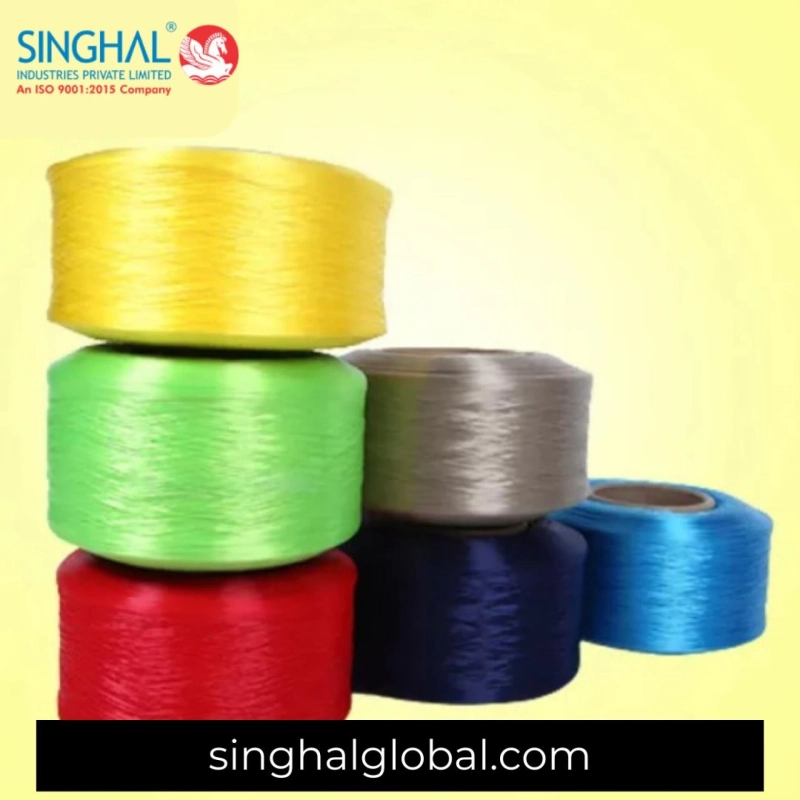In the ever-evolving landscape of textiles, PP fibrillated yarn stands out as a revolutionary material. This innovative yarn, crafted from polypropylene (PP), offers a unique blend of strength, versatility, and cost-effectiveness, making it a valuable asset across a wide range of industries.
Understanding PP Fibrillated Yarn
PP fibrillated yarn is produced by splitting stretched PP filaments into numerous fine fibrils. These fibrils are then combined to form a yarn with a distinct texture and superior performance characteristics. Compared to traditional yarns, PP fibrillated yarn boasts several advantages:
1. Enhanced Strength: The fibrillated structure creates a yarn with exceptional tensile strength, making it ideal for applications requiring high load-bearing capacity.
2. Lightweight Design: Despite its strength, PP fibrillated yarn is remarkably lightweight, reducing overall product weight and contributing to efficient transportation.
3. Dimensional Stability: Best PP fibrillated yarn exhibits minimal shrinkage and stretching, ensuring consistent performance and product integrity.
4. Chemical Resistance: The inherent properties of polypropylene make the yarn resistant to a wide range of chemicals, including acids, alkalis, and solvents.
5. Cost-Effectiveness: PP fibrillated yarn offers a cost-competitive alternative to traditional materials, without compromising on quality or performance.
6. Sustainability: Polypropylene is recyclable, contributing to a more eco-friendly manufacturing process.
Applications of PP Fibrillated Yarn
The versatility of PP fibrillated yarn translates to a multitude of applications across various industries:
1. Textiles: Fibrillated yarns are incorporated into carpets, upholstery fabrics, and industrial textiles due to their durability and resistance to wear and tear.
2. Geotextiles: The high strength and dimensional stability of these yarns make them ideal for soil reinforcement, erosion control, and drainage applications in civil engineering projects.
3. Agriculture: PP fibrillated yarns are used in agricultural shade cloths, bale nets, and crop support structures, providing protection and structural support.
4. Packaging: Fibrillated yarns are utilized in the production of FIBC (Flexible Intermediate Bulk Container) bags, offering a strong and cost-effective solution for bulk material packaging.
5. Composites: When combined with resins, PP fibrillated yarns can be used to create lightweight yet robust composite materials for various applications.
Why Choose PP Fibrillated Yarn?
For manufacturers and businesses seeking a cost-effective and high-performing material, PP fibrillated yarn presents a compelling proposition. Here\'s a closer look at the key benefits:
1. Cost Savings: Compared to traditional materials, PP fibrillated yarn offers significant cost advantages throughout the production process.
2. Improved Performance: The unique properties of the yarn translate to enhanced strength, durability, and longevity in the final product.
3. Versatility: The wide range of applications makes PP fibrillated yarn a valuable asset for diverse industries.
4. Sustainability: The recyclability of polypropylene contributes to a more environmentally conscious manufacturing approach.
Finding the Right PP Fibrillated Yarn
To reap the full benefits of PP fibrillated yarn, it\'s crucial to source it from reputable PP filament yarn manufacturers or pp yarn manufacturers. These manufacturers offer yarns with varying properties, such as denier (yarn thickness) and fibrilation level, to cater to specific application requirements. Here in India, there\'s a flourishing market for PP yarn manufacturers, making it easy to find a reliable supplier that meets your needs.
Conclusion
PP fibrillated yarn stands out as a game-changer in the textile industry. Its unique blend of strength, versatility, and cost-effectiveness makes it a valuable asset for a wide range of applications. As industries strive for sustainable and efficient solutions, PP fibrillated yarn is poised to play a pivotal role in shaping the future of manufacturing.
FAQs(Frequently Asked Questions)
Q1. What is the difference between PP fibrillated yarn and regular PP yarn?
A1. Regular PP yarn consists of continuous filaments, while PP fibrillated yarn is formed by splitting these filaments into fine fibrils. This process creates a yarn with a more textured surface and enhanced strength.
Q2. Is PP fibrillated yarn recyclable?
A2. Yes, polypropylene is a recyclable material. Check with your supplier and local recycling facilities to ensure proper disposal practices.
Q3. What are some factors to consider when choosing a PP fibrillated yarn supplier?
A3. Look for a supplier with a proven track record, a diverse product range to meet your specific needs, and a commitment to quality control. Additionally, consider factors like pricing, delivery times, and customer service.



